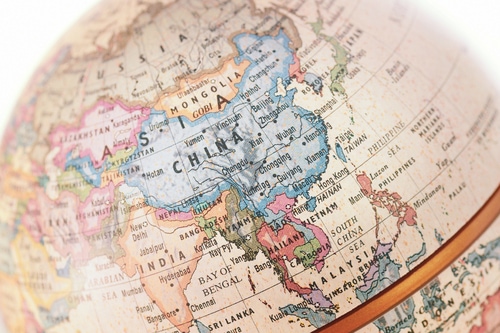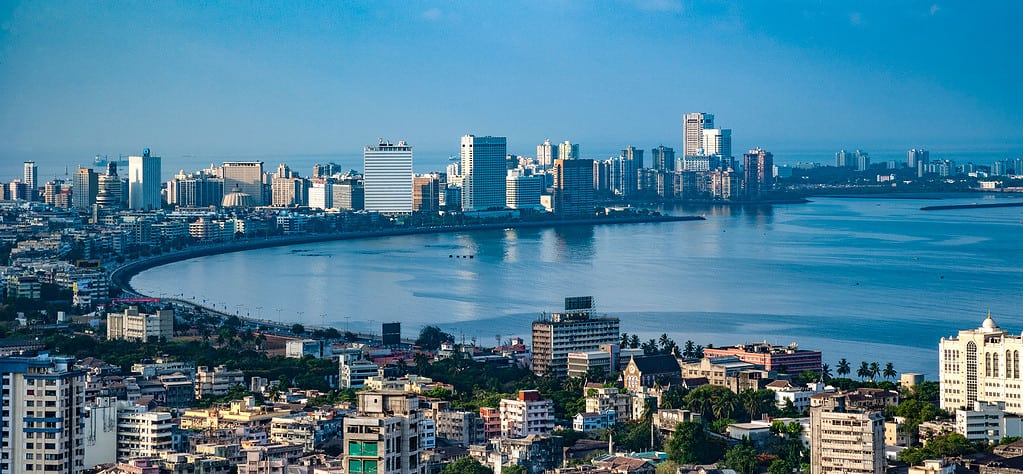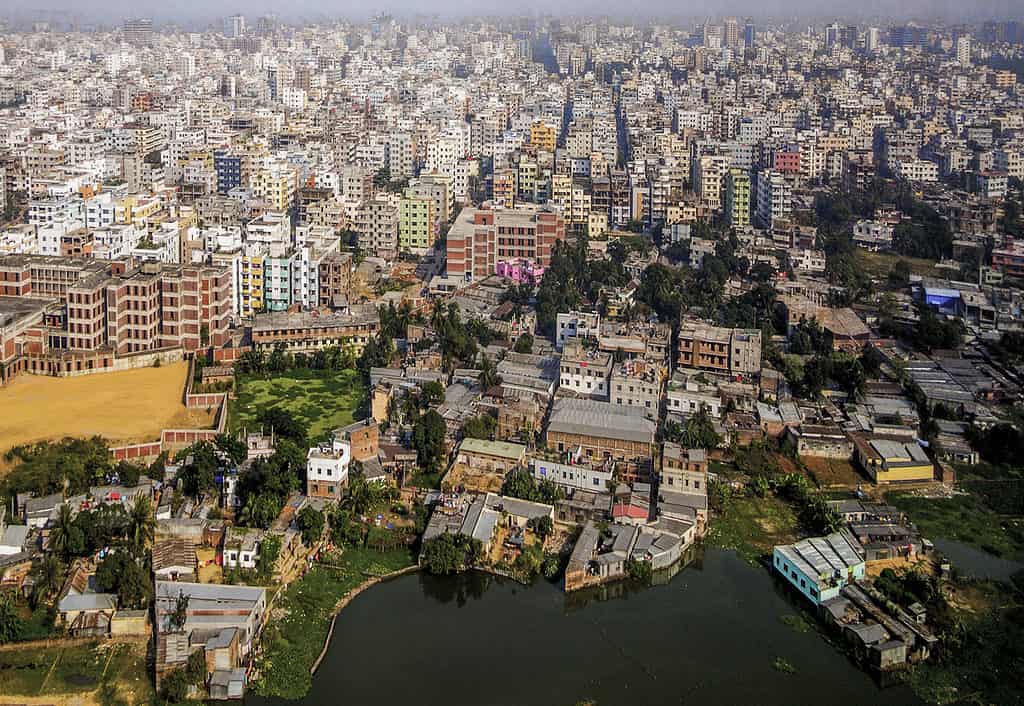Born in one of the world’s most populous countries, I’ve always pondered how my homeland reached this status. Do other nations face similar population challenges globally? Are they affluent or less fortunate? What weather conditions prevail in these nations? Fueled by these questions, I initiated my exploration. My curiosity surged, compelling me to delve deeper into the economic landscapes of different countries. And so, my journey commenced. Since I originally hail from Asia, I started my research by looking at the most populated nations on this continent.
Understanding which countries are the most populous and how these rankings might evolve in coming decades is essential for policymakers, economists, and anyone interested in our world’s future. In this exploration, we will compile a list of the five largest Asian countries by population today and delve into the intriguing task of forecasting what this list might look like 50 years from now. Without further delay, let’s delve into the specifics.

Understanding which countries are the most populous and how these rankings might evolve in coming decades is essential for policymakers, economists, and anyone interested in our world’s future.
©Anson_shutterstock/Shutterstock.com
Asia — The Largest Continent
Geographically, Asia far exceeds all other continents in size. Additionally, it has the highest population globally. This results primarily from the massive populations of two countries — China and India. According to the latest United Nations estimates, the population across Asia has now risen to approximately 4,761,200,943 (4.76 billion) people as of October 2, 2023.
Human population size stands as a critical metric for understanding the world. The United Nations publishes projections in its World Population Prospects, a practice it has conducted periodically for over 50 years now. Moreover, the majority of the UN’s population projections have aligned closely with final real-world estimates.
According to statistics, Asia’s population equals around 59.22% of the total global population as of 2023. Furthermore, the population density across Asia averages about 153 people per square kilometer. With a total land area of approximately 31,033,131 square kilometers, 52.6% of Asia’s population resides in urban areas, equivalent to 2,500,201,501 (2.5 billion) urban dwellers. Additionally, the median age across the continent stands at 31.9 years currently.
Some Technicalities: Demographic Transition
Demographic transition denotes a shift where high birth rates and high death rates both decline, catalyzing rapid population growth.
This phenomenon progresses through four main stages:
- The pre-transition stage exhibits high birth rates coupled with high death rates, yielding slow population growth.
- However, in the early transition stage, death rates start decreasing due to sanitation and medical improvements while birth rates stay elevated, fueling rapid growth.
- Subsequently, during the late transition, birth rates began dropping because of urbanization, education, and contraception access. This deceleration then slows the population growth rate.
- Finally, the post-transition stage displays low birth rates aligning with low death rates, generating slower growth again.
The demographic transition helps us understand how populations change in various countries and situations. But keep in mind that it’s not a one-size-fits-all process. Some countries are in the early stages, while others are in the later stages. Some change faster, while some change slower, and it can happen at different times. It’s a bit like a journey, but not everyone takes the same path or arrives at the same destination at the same time.
The demographic transition can really shake things up in a country. It affects society and the country in many ways. It can impact how fast the economy grows, how old people are, and how many people can work, to name a few. So, it’s a big deal that can change a lot of stuff.
A glossary of Demographic Terms can be found here.
The Top 5 Most Populous Asian Countries
Here are the top five populous countries in Asia as of 2023.
1. China
According to 2023 statistics, China’s total population reaches about 1,425,671,352 (approximately 1.43 billion) people currently. Furthermore, the population declines by around -0.02% yearly, representing a net change of -215,985. Additionally, China’s fertility rate stands at 1.2 births per woman, and the median age equals 39 years. Moreover, approximately 65% of Chinese inhabit urban areas, with China constituting 17.72% of the global population.
Looking ahead, projections indicate China’s population will decline slightly over the next 50 years. Specifically, after reaching a peak of over 1.42 billion in 2021, forecasts predict China’s population will decrease by more than 100 million people, potentially totaling around 1,051,380,906 (1.05 billion) individuals by 2073.
China is in Stage 4 of the demographic transition, where the population is not growing very fast. This stability is because the birth rate and death rate are fairly balanced. So, China’s population isn’t increasing rapidly like it used to.
- You can find additional information about China’s future population projections here.
- You can find more information about the most populated cities in China here.
- Fertility rates here.
- Life Expectancy rates.

The bustling Shanghai city skyline along the Huangpu River. Shanghai is one of China’s most populated cities.
©Sean Pavone/Shutterstock.com
2. India
According to 2023 statistics, India’s total population has reached around 1,428,627,663 (1.43 billion) people. Furthermore, it increases by approximately 0.81% annually, representing a net change of 11,454,490 (11.45 million) people per year. Additionally, India’s fertility rate currently stands at 2.0 births per woman, while the median age equals 28 years. Moreover, around 36% of Indians inhabit urban dwellings, with India constituting 17.76% of the global population share.
Looking forward to 2073, the world is projected to reach a total population of 10,344,891,492 (10.34 billion). India will be the most populous country that year, with a projected total of 1,682,564,509 (1.68 billion) people, surpassing China. This is due to India’s younger population and higher fertility rate. India’s population is expected to continue to grow in the coming decades.
India is in the third stage of a four-stage model of demographic transition. This model starts with a stable population having high death rates and birth rates and moves towards a stable population with lower death and birth rates. Interestingly, some states within India have already reached the fourth stage, where population growth becomes much slower.
- You can find additional information about India’s future population projections here.
- You can find more information about the most populated cities in India here.
- Fertility rates here.
- Life Expectancy rates.

Mumbai is one of India’s most populated cities.
©iStock.com/Ajay Salvi
3. Indonesia
According to 2023 statistics, Indonesia’s total population has reached around 277,534,122 (277.53 million) people. Furthermore, it increases by approximately 0.74% annually, representing a net change of 2,032,783 people per year. Additionally, Indonesia’s fertility rate currently stands at 2.1 births per woman, while the median age equals 30 years. Moreover, around 59% of Indonesians inhabit urban dwellings, with Indonesia constituting 3.45% of the global population share.
Indonesia is currently in the third stage of demographic transition, which is often called the “late expanding stage.” In this stage, the population is still growing, but at a slower rate compared to before.
Based on the World Population Prospects 2022, Indonesia’s population projection for 2073 is as follows:
- Projected population: Approximately 317 million or 338.9 million.
- Total fertility rate (TFR): 1.70
- Annual population growth rate: 0.31%
- You can find additional information about Indonesia’s future population projections here.
- You can find more information about the most populated cities in Indonesia here.
- Fertility rates here.
- Life Expectancy rates.

Jakarta is one of the most populated cities in all of Indonesia.
©Akhmad Dody Firmansyah/Shutterstock.com
4. Pakistan
According to 2023 statistics, Pakistan’s total population has reached around 240,485,658 (240.49 million) people. Furthermore, it increases by approximately 1.98% annually, representing a net change of 4,660,796 people per year. Additionally, Pakistan’s fertility rate currently stands at 3.3 births per woman, while the median age equals 21 years. Moreover, around 35% of Pakistanis inhabit urban dwellings, with Pakistan constituting 2.99% of the global population share.
According to research, Pakistan is presently in the third stage of demographic transition, often referred to as the “late expanding stage.” In this stage, the population is still growing, but the growth rate has slowed down compared to earlier stages.
Based on the World Population Prospects 2022, Pakistan’s population projection for 2073 is as follows:
- Projected population: Approximately 344 million or 398 million.
- Total fertility rate (TFR): 1.85
- Annual population growth rate: 0.77%
- You can find additional information about Pakistan’s future population projections here.
- You can find more information about the most populated cities in Pakistan here.
- Fertility rates here.
- Life Expectancy rates.

The most populated city in Pakistan is Karachi.
©ibrar.kunri/Shutterstock.com
5. Bangladesh
According to 2023 statistics, Bangladesh’s total population has reached around 172,954,319 (172.95 million) people. Furthermore, it increases by approximately 1.03% annually, representing a net change of 1,767,947 people per year. Additionally, Bangladesh’s fertility rate currently stands at 1.9 births per woman, while the median age equals 27 years. Moreover, around 41% of Bangladeshis inhabit urban dwellings, with Bangladesh constituting 2.15% of the global population share.
Bangladesh is in the third stage of demographic transition, which is called the “late expanding stage.” In this stage, the population is still growing, but not as rapidly as before.
Based on the World Population Prospects 2022, Bangladesh’s population projection for 2073 is as follows:
- Projected population: Approximately 209 million or 236 million.
- Total fertility rate (TFR): 1.70
- Annual population growth rate: 0.31%
- You can find additional information about Bangladesh’s future population projections here.
- You can find more information about the most populated cities in Bangladesh here.
- Fertility rates here.
- Life Expectancy rates.

Dhaka is the capital of Bangladesh and the most populated city in Bangladesh.
©iStock.com/Meinzahn
Conclusion
Looking at the list of the five most populous Asian countries today and projections for 50 years from now, it is clear that the largest nations in 2073 will be familiar, leading countries today, as well as emerging demographic giants like Nigeria. However, the exact order is likely to change, with India and China competing for the top spot and countries like Indonesia and Pakistan rising in rank.
The future is uncertain, but it is important to watch these changes closely to make informed decisions and address pressing issues like resource allocation, urbanization, and environmental sustainability.
Regardless of which country is the most populous in 2073, international cooperation will be essential, given the common and competing interests of these highly populated nations. While forecasting cannot perfectly predict complex demographic changes, assessing the trajectory of growth provides insights that allow societies to prepare thoughtfully.
Comparison of the Largest Countries in Asia by Population in 2023 and 2073
| 2023 | 2073 (Projected) |
| 1. China (1,425,671,352) 2. India (1,428,627,663) 3. Indonesia (277,534,122) 4. Pakistan (240,485,658) 5. Philippines (117,337,368) | 1. India (1,682.5 million or 1,705.8 million) 2. China (1,364.3 million) 3. Pakistan (344 million or 398 million) 4. Indonesia (317 million or 338.9 million) 5. Bangladesh (209 million or 236 million) |
Thank you for reading! Have some feedback for us? Contact the AZ Animals editorial team.








